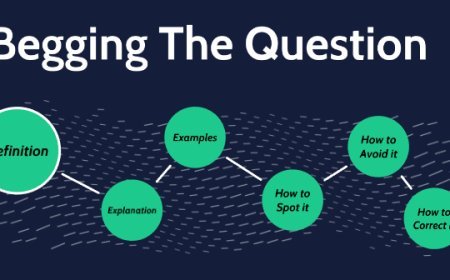Intrinsic vs Extrinsic Motivation
Explore the difference between intrinsic and extrinsic motivation and how these two forces shape your behavior. Learn how to leverage both internal passion and external rewards for greater success and personal fulfillment.

Motivation is the driving force behind our actions. It's what makes us do what we do. Psychologists have long categorized motivation into two primary types: intrinsic and extrinsic. While both can compel us to act, they originate from very different places and have distinct effects on our behavior, well-being, and performance.
Intrinsic Motivation: The Internal Drive
Intrinsic motivation comes from within you. It's the desire to do something because it's personally rewarding. You engage in the activity for its own sake, not because of external pressures or rewards. This type of motivation is often fueled by feelings of enjoyment, interest, curiosity, or a sense of personal challenge. The reward is the activity itself.
Examples of Intrinsic Motivation:
-
Reading a book because you are genuinely interested in the story or topic. 📚
-
Exercising because you enjoy the feeling of pushing your body and the satisfaction of a good workout. 🏋️♀️
-
Learning a new skill like playing the guitar because you're fascinated by music and want to master the instrument. 🎸
-
Volunteering for a cause you care about because it gives you a sense of purpose and fulfillment. 🤝
Extrinsic Motivation: The External Reward
Extrinsic motivation involves doing something to get a separate outcome or external reward. The motivation is not inherent to the activity itself but is tied to a consequence, whether it's a tangible prize, a social benefit, or the avoidance of a punishment. The focus is on the result, not the process.
Examples of Extrinsic Motivation:
-
Studying for an exam to get a good grade. 💯
-
Working a job to earn money. 💰
-
Cleaning your room to avoid being grounded. 🧹
-
Participating in a competition to win a trophy or prize. 🏆
Which Is Better? A Mix of Both
While intrinsic motivation often leads to deeper engagement, higher creativity, and greater long-term satisfaction, extrinsic motivation isn't inherently bad. In many situations, it's necessary and effective. Extrinsic motivators can be particularly useful for tasks that people find boring or unpleasant. For example, an employee might not enjoy a tedious data-entry task, but the paycheck is a powerful extrinsic motivator that ensures the work gets done.
However, an overemphasis on extrinsic rewards can sometimes backfire. A classic psychological finding, known as the overjustification effect, shows that when an intrinsically rewarding activity is tied to an external reward, a person's intrinsic motivation for that activity can actually decrease. The person's focus shifts from enjoying the task to getting the reward.
In reality, our motivations are often a blend of both intrinsic and extrinsic factors. An artist might paint because they love the creative process (intrinsic motivation) but also hope to sell their work to make a living (extrinsic motivation). A student might study because they enjoy the subject and want to learn more (intrinsic) but also because they want to get a high GPA for college applications (extrinsic). Understanding what drives you and others can be a powerful tool for personal growth, effective management, and a more fulfilling life.
Wait - there is more: Value vs Motivation
The concepts of intrinsic and extrinsic motivation and value are not isolated; they are deeply interconnected forces that shape our choices and experiences. By blending these ideas, we can gain a richer understanding of what truly drives us and what we deem worthy of our time and effort. It's the difference between doing something and doing something meaningful.
Let's revisit our earlier examples, this time with a combined perspective:
-
Money: Money has no intrinsic value; its worth is purely extrinsic, derived from what it can buy. It is a powerful source of extrinsic motivation—we work for it, save it, and seek more of it because of the security and goods it can provide. Yet, the actions we take to earn that money can sometimes have an intrinsic element, such as the satisfaction of a job well done.
-
A College Degree: The degree itself has significant extrinsic value—it's a tool for getting a job and a higher salary. This makes it a powerful extrinsic motivator for students. However, the process of getting the degree can be intrinsically valuable; the learning, personal growth, and friendships gained are worthwhile for their own sake, regardless of the career outcome. This intrinsic value can become a strong intrinsic motivator that fuels a student's desire to learn.
-
A Hobby: Take playing the guitar. The activity has intrinsic value because the joy of creating music is an end in itself. This makes it a strong intrinsic motivator—we do it because we love it. If a musician decides to start playing for money, the guitar gains extrinsic value as a means to an end, and playing becomes driven by extrinsic motivation to earn a living. The danger, as with the overjustification effect, is that the external reward might diminish the initial joy and passion.
Ultimately, the most fulfilling pursuits are often those that successfully blend these concepts. We seek out activities that are intrinsically motivating and hold intrinsic value, but we also acknowledge that external rewards and instrumental value are necessary in a functional society.
The journey toward a purposeful life involves more than simply understanding these four concepts individually. It's about recognizing how they interact and influence one another. It's the difference between asking, "What do I need to do to get what I want?" (extrinsic) and "What is truly valuable and meaningful for its own sake?" (intrinsic). By aligning our actions with what we find intrinsically valuable, we can leverage both types of motivation to pursue a life that is not only successful in an external sense but also deeply satisfying on a personal level.
For more on the philosophical distinction between intrinsic and extrinsic value, please read this article:
What's Your Reaction?
 Like
0
Like
0
 Dislike
0
Dislike
0
 Love
0
Love
0
 Funny
0
Funny
0
 Angry
0
Angry
0
 Sad
0
Sad
0
 Wow
0
Wow
0




















